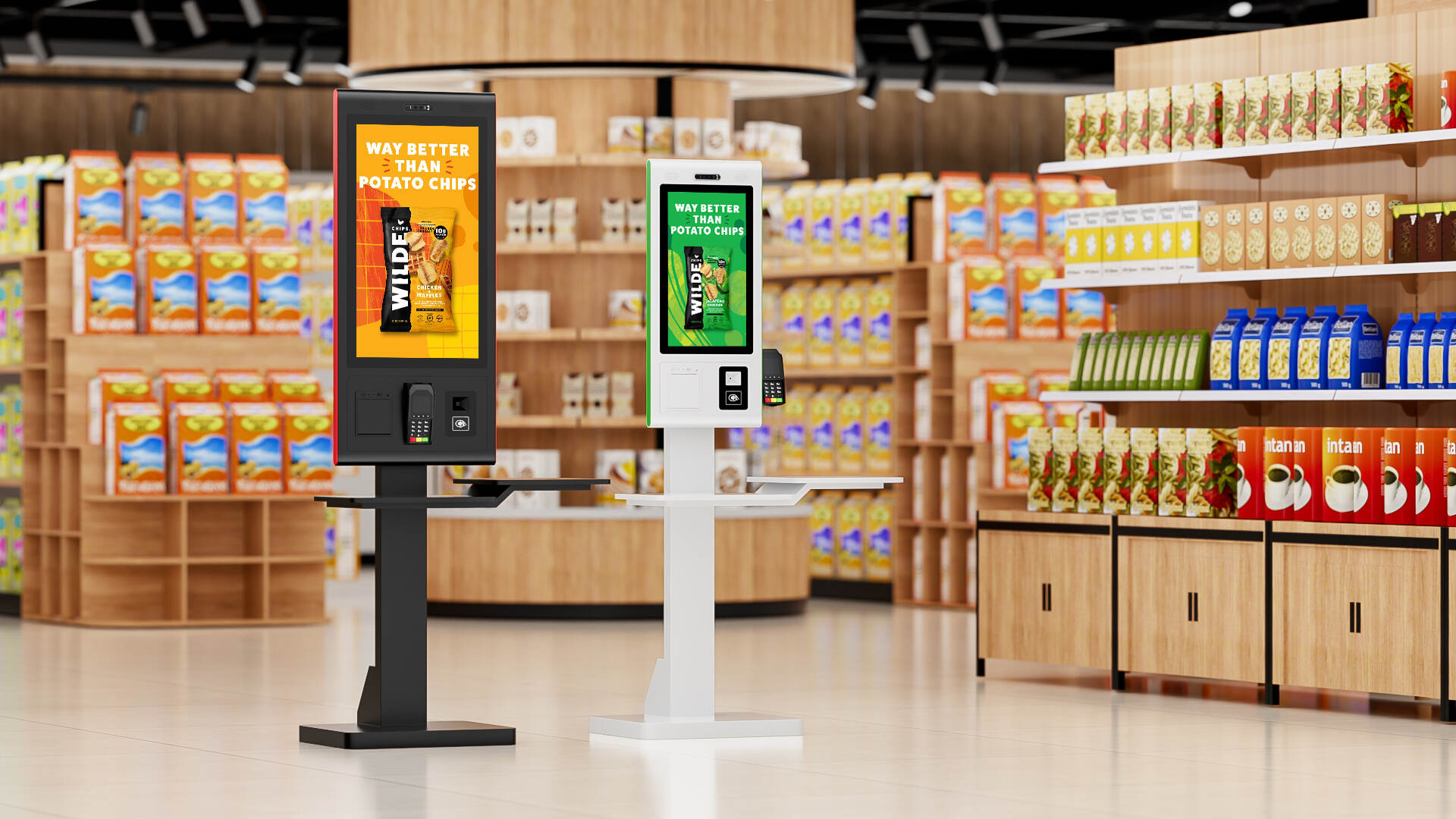Email format error
Email cannot be empty
Email already exists
6-20 characters(letters plus numbers only)
The password is inconsistent
Email format error
Email cannot be empty
Email does not exist
6-20 characters(letters plus numbers only)
The password is inconsistent

News
Here, you can describe a piece of text you want to express

Enhancing Customer Self-Service Experience through Display Screens: A Modern Solution for Airports, Kiosks, and Vending Booths
In today's fast-paced world, customer experience has become a key competitive differentiator. With the rise of self-service technology, businesses are increasingly implementing solutions that allow customers to interact with devices directly, improving both efficiency and satisfaction. Display screens have emerged as essential tools in this evolution, enabling businesses to offer seamless, interactive self-service experiences. Airports, shopping malls, and kiosks are among the top environments where this technology has made a significant impact.
Airports: Streamlining Passenger Flow and Reducing Wait Times
Airports are among the busiest public spaces, with a constant flow of passengers who need quick and efficient services. Traditional methods of queuing for ticketing or customer service can lead to frustration, especially during peak travel times. To combat this, airports have introduced self-service kiosks equipped with interactive display screens.
These kiosks enable passengers to check in, print boarding passes, and even select their seats without standing in long lines. The display screens offer easy navigation with intuitive touch interfaces, providing real-time information about flights, gate numbers, and even baggage claim details. Additionally, airport kiosks can incorporate multilingual options, ensuring that international travelers can access the services they need without any language barriers.
Beyond check-in, display screens are also used for wayfinding. Interactive digital maps guide passengers to their gates, restrooms, and other amenities. These systems help improve the overall passenger experience by reducing confusion and enhancing the efficiency of the airport layout.
Shopping Malls: Transforming the Retail Experience
Shopping malls are also integrating display screens to elevate the self-service experience for customers. Digital kiosks are placed strategically in common areas or near entrances, allowing shoppers to search for store locations, promotions, and even check the availability of specific products. The touchscreen interface makes the process quick and easy, giving customers the autonomy to browse the mall's offerings without needing assistance from staff.
For example, at a mall's directory kiosk, customers can input their destination (such as a specific store or restaurant) and instantly receive directions, product availability, and even store hours. Display screens at checkout kiosks allow customers to quickly scan items, process payments, and skip the line for traditional checkout counters. This reduces wait times and enhances the overall shopping experience.
Moreover, malls are using screens to display dynamic advertising, offering customers promotions or deals based on real-time data and foot traffic. This level of personalization helps businesses drive sales while delivering relevant content to their audience.
Vending Booths: Smart Vending for Modern Consumers
Vending booths, often seen in airports, shopping malls, and public spaces, have evolved from simple snack dispensers into fully interactive, digital hubs. These advanced vending machines are equipped with high-resolution display screens that provide detailed product information, customization options, and even payment methods beyond traditional cash.
For instance, a vending booth could display the nutritional information of food items or allow users to customize their drinks or snack orders before making a purchase. Touchscreen interfaces let customers browse through a wide range of options, check availability, and place their orders efficiently. Many modern vending booths now accept mobile payments, making transactions faster and more secure.
These digital vending machines can also showcase special promotions, limited-time offers, or loyalty rewards, encouraging repeat customers. They can track customer preferences over time, further personalizing the experience and offering tailored suggestions for future purchases.
Why Display Screens Make a Difference
The power of display screens in self-service environments lies in their ability to create a highly personalized, efficient, and engaging experience. Here are a few reasons why display screens are vital to enhancing the self-service experience:
-
User-Friendly Interface: Display screens are intuitive, offering users an easy-to-navigate interface that requires minimal learning. Whether it's purchasing a ticket, navigating a mall, or customizing an order, these interfaces can simplify complex tasks, making them accessible for all types of users.
-
Multilingual and Accessible: Digital screens can be set up in multiple languages, ensuring that customers from diverse backgrounds feel welcomed and understood. Accessibility features such as voice-guided instructions or larger fonts can make it easier for users with disabilities to interact with self-service systems.
-
Real-Time Updates: One of the key advantages of display screens is their ability to provide real-time information. In airports, this means up-to-date flight schedules. In malls, it might mean flash sales or limited-time promotions. Real-time updates ensure that customers have the most accurate information at their fingertips.
-
Reduced Wait Times: Self-service kiosks reduce reliance on staff, helping to reduce long wait times and overcrowding. By allowing customers to serve themselves, businesses can increase efficiency while providing customers with immediate access to the services they need.
-
Engagement and Branding: Display screens offer an opportunity for brands to engage directly with customers through dynamic content such as advertisements, promotions, or interactive games. By offering personalized or contextual messages, businesses can reinforce their brand image and foster a deeper connection with customers.
The Future of Self-Service Technology
As technology continues to advance, the potential for display screens to enhance customer self-service experiences will only increase. With the integration of AI, facial recognition, and augmented reality, self-service systems will become even more tailored to individual customer preferences, streamlining the entire process even further.
In airports, for example, AI could be used to recognize a passenger’s identity and automatically retrieve flight details, making the check-in process even faster. In shopping malls, augmented reality screens might allow customers to visualize how a product would look in their home before making a purchase.
Overall, the rise of self-service technologies, powered by display screens, is transforming the way businesses interact with their customers. Airports, shopping malls, and vending booths are just the beginning. As these solutions continue to evolve, businesses will have more opportunities to improve efficiency, enhance customer satisfaction, and deliver a truly modern self-service experience.
Conclusion
Display screens have become an integral part of the self-service ecosystem, offering countless benefits to both businesses and customers. Whether it's reducing wait times at airports, enhancing the shopping experience in malls, or providing a seamless purchase journey through vending booths, display screens improve accessibility, engagement, and convenience. As technology advances, these self-service solutions will continue to evolve, providing even more personalized, interactive, and efficient experiences for customers worldwide.

